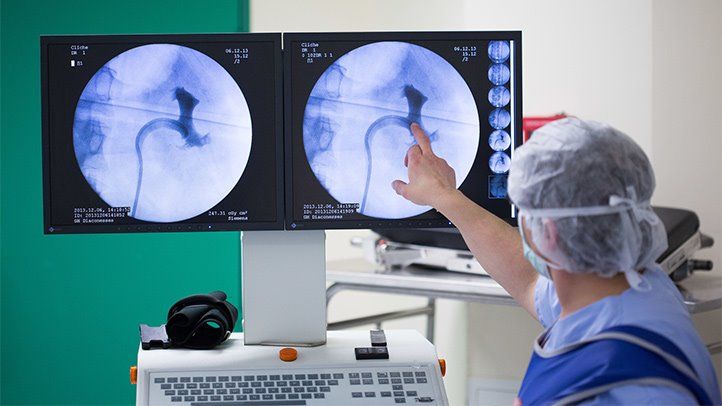
Indoor Spin Class and Cardiovascular Longevity: What It Means for Asian Populations
Cardiovascular health is one of the most pressing concerns in Asia, with conditions such as hypertension, diabetes, and heart disease affecting millions. In Singapore, where urban lifestyles often encourage sedentary habits, adopting preventive strategies has become essential. While many forms of exercise improve heart health, an indoor spin class stands out as a highly efficient, research-backed workout that delivers measurable cardiovascular benefits. More importantly, studies suggest that group cycling not only improves short-term fitness but also supports long-term heart function and overall longevity.
The benefits of cardiovascular training are well recognised, yet the way it applies specifically to Asian populations requires deeper exploration. Genetic predispositions, dietary habits, and cultural factors all influence how people respond to exercise. Institutions such as TFX provide structured indoor cycling programmes that allow individuals in Singapore to address these health risks in a safe and scientifically sound environment.
The Cardiovascular Challenge in Asia
Asian populations have unique health profiles compared to Western counterparts. Many are genetically predisposed to higher risks of type 2 diabetes and cardiovascular disease despite lower overall body mass indexes. In Singapore, the Ministry of Health has highlighted increasing rates of hypertension and obesity, particularly among younger adults. These conditions are strongly linked to heart disease, which remains a leading cause of mortality in the region.
Sedentary work environments, long hours, and reliance on convenience foods further compound the problem. Traditional remedies are no longer enough. Structured, high-intensity cardiovascular exercise such as indoor cycling is becoming a crucial part of prevention strategies.
How Indoor Spin Classes Strengthen the Heart
Spin sessions elevate heart rate quickly, training the cardiovascular system in ways that walking or low-intensity activities cannot match. Over time, this leads to several adaptations:
-
Stronger Heart Muscle: Regular cycling increases cardiac output, meaning the heart pumps more blood with each beat.
-
Improved Circulation: Exercise enhances blood vessel flexibility, lowering blood pressure.
-
Better Oxygen Delivery: Higher aerobic capacity ensures muscles and organs receive more oxygen during daily activity.
-
Cholesterol Regulation: Consistent high-intensity workouts support a healthier balance between HDL (good cholesterol) and LDL (bad cholesterol).
These benefits directly reduce the risk of coronary artery disease and stroke, two major health threats in Asia.
Longevity Benefits from Aerobic Training
Scientific research consistently links aerobic training to increased lifespan. A study published in the Journal of the American Heart Association found that individuals engaging in high-intensity cycling reduced mortality risk by up to 40 percent compared to sedentary groups.
Longevity is not just about living longer but maintaining quality of life. Indoor spin classes help by:
-
Supporting healthy weight management
-
Reducing risks of diabetes complications
-
Enhancing lung capacity for everyday activities
-
Maintaining functional independence in later years
For ageing populations in Singapore, where life expectancy is already among the highest globally, the focus is now shifting to maintaining health span. Spin provides a sustainable way to keep the cardiovascular system youthful.
Why Spin Works for Asian Lifestyles
There are cultural and environmental reasons why spin is particularly suited for Asian populations.
-
Dietary Patterns: Carbohydrate-heavy meals are common across Asia. Spin’s high energy demands help regulate blood sugar and prevent insulin resistance.
-
Urban Living: Limited outdoor space in cities like Singapore makes group indoor cycling a practical alternative to road biking.
-
Community Preference: Group activities align with social habits, enhancing motivation and adherence.
-
Weather Conditions: High humidity and heat often discourage outdoor cardio, making indoor environments safer and more consistent.
These factors explain why spin is gaining popularity across Asian cities, not just as a trend but as a long-term health investment.
Spin and Hypertension Control
High blood pressure is one of the most widespread cardiovascular risks in Asia. Research shows that aerobic exercise like spin can lower both systolic and diastolic blood pressure. The mechanism is straightforward: consistent training reduces arterial stiffness and improves vascular health.
Participants with borderline hypertension often report reductions in blood pressure readings after just a few months of consistent spin training. Combined with balanced nutrition, the impact is significant.
Managing Diabetes Through Indoor Cycling
Type 2 diabetes is another major concern in Singapore and across Asia. Spin classes help manage blood glucose by increasing insulin sensitivity. When muscles contract repeatedly during cycling, they draw glucose from the bloodstream more efficiently, reducing spikes in blood sugar.
For individuals with a family history of diabetes, spin becomes not only a fitness choice but also a preventive medical strategy. The low-impact nature of cycling makes it suitable for long-term participation even among those with joint concerns.
Mental and Emotional Benefits Linked to Heart Health
Cardiovascular longevity is influenced not just by physical but also psychological factors. Stress, anxiety, and depression are known to increase risks of heart disease. Spin classes reduce these risks by triggering endorphin release, promoting relaxation, and providing a structured outlet for stress relief.
The group format also combats loneliness, which has been linked to higher mortality rates. In Singapore’s fast-paced society, the social connections formed in spin studios are as important as the physical training itself.
Integrating Spin into a Long-Term Health Plan
To maximise cardiovascular benefits, spin should be integrated into a sustainable routine.
-
Frequency: 3–4 sessions per week provide optimal heart health benefits.
-
Duration: 45-minute classes are sufficient to reach cardiovascular training zones.
-
Intensity: Riders should target 70–85 percent of maximum heart rate during intervals.
-
Progression: Gradually increasing resistance ensures continuous adaptation.
This structure aligns with recommendations from global health authorities, ensuring spin participants build endurance safely and effectively.
Singapore Case Examples
-
Middle-aged executives: Use spin classes before or after office hours to reduce stress and maintain heart health.
-
Young adults: Turn to spin as a high-intensity alternative to combat weight gain from sedentary lifestyles.
-
Seniors: Participate in modified spin programmes that focus on low-impact endurance, ensuring cardiovascular fitness without injury.
These real-life applications illustrate how spin serves multiple demographics across the nation.
FAQs About Cardiovascular Longevity and Indoor Spin Class
Q. Is indoor cycling safe for people with existing heart conditions?
Yes, with medical clearance. Many cardiologists recommend supervised aerobic exercise like spin for patients recovering from mild conditions or managing risk factors.
Q. Can spin classes reduce the risk of stroke?
Yes. By improving circulation, reducing blood pressure, and regulating cholesterol, spin directly lowers stroke risk.
Q. How soon can cardiovascular benefits be noticed?
Improvements such as lower resting heart rate and better endurance may appear within six weeks of consistent training.
Q. Do I need to combine spin with other forms of exercise?
While spin provides excellent cardiovascular benefits, combining it with resistance training ensures a balanced fitness plan that supports overall longevity.
Q. Can seniors safely participate in spin classes?
Absolutely. With proper bike setup and moderate resistance, spin offers seniors a safe way to maintain cardiovascular fitness while avoiding high-impact stress.
Final Thoughts
Cardiovascular longevity is not a distant concept but a daily practice shaped by lifestyle choices. For Singaporeans and other Asian populations, genetic predispositions make proactive health management even more critical. An indoor spin class provides an effective, accessible, and enjoyable way to protect the heart, regulate chronic risks, and extend both lifespan and health span. By embracing spin as part of regular fitness, individuals can take meaningful steps toward a healthier, longer life supported by both science and community.



